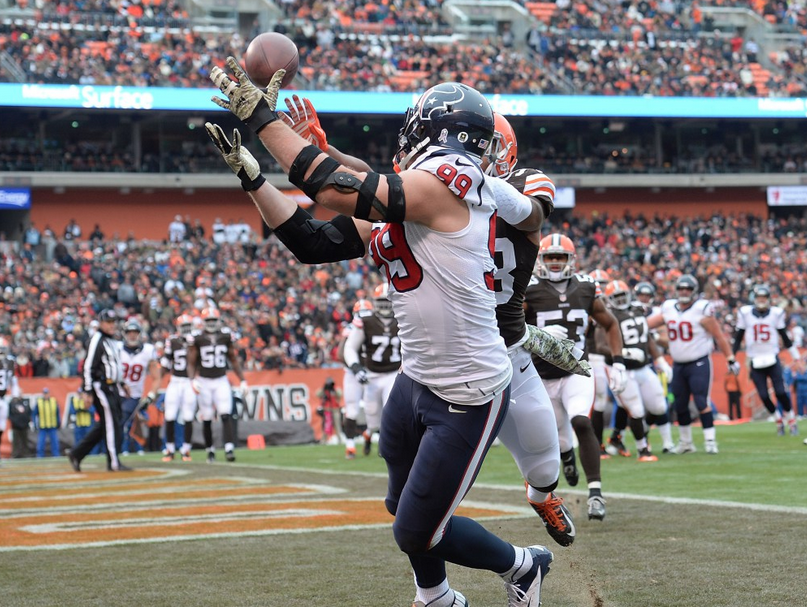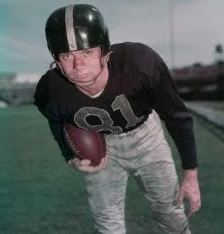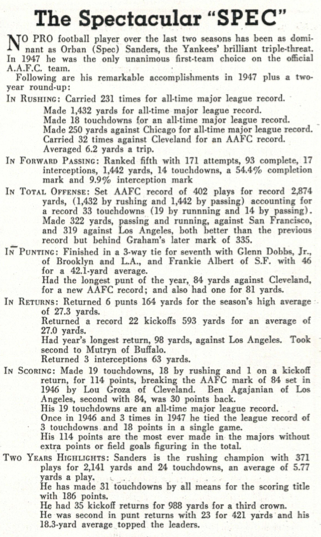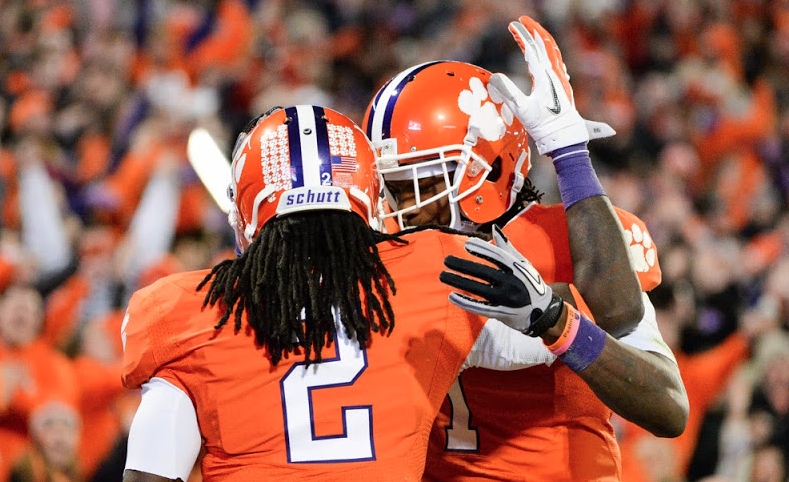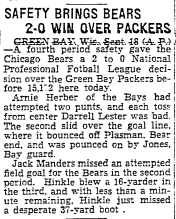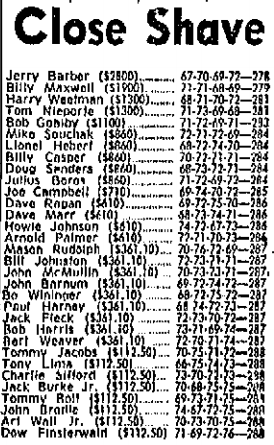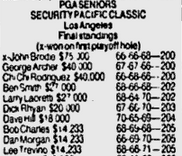Now that Dennis Allen has been asked to turn in his key fob in Oakland, after coaching the Raiders for a mere 36 games (28 of them losses), it might be a good time to talk about NFL coaching hires. It’s a fertile area for study, with plenty of data to analyze, yet little is ever written about it. Coaches come and coaches go — sometimes at a head-spinning rate — and everybody seems fine with that. Maybe it’s because they can’t score points in Fantasy Football.
Take this year’s seven new hires. At the quarter pole of Season 1, this is where they stand:
[table width=“300px”]
Coach\,Team,W-L
Jim Caldwell\, Lions,3-1
Bill O’Brien\, Texans,3-1
Mike Zimmer\, Vikings,2-2
Mike Pettine\, Browns,1-2
Jay Gruden\, Redskins,1-3
Lovie Smith\, Bucs,1-3
Ken Whisenhunt\, Titans,1-3
Total,12-15
[/table]
It’s just a snapshot, sure, but did anybody have much of a feel going into the season about which of these coaches would be successful right out of the chute and which wouldn’t? Along those same lines, would anyone wager much money on which of them — if any — will still be in their jobs, say, five years from now?
Obviously, no coach is an island. Winning takes a village, from the owner and general manager on down. Luck also factors in — especially when you get to draft Oliver Luck with the first pick of the draft instead of JaMarcus Russell or Tim Couch. Even so, there’s much about the selection of an NFL coach that’s just plain mysterious. Here’s why:
There’s no cone drill for a would-be coach to run, no Wonderlic test to take. He doesn’t get asked to jump as high as he can, hoist a barbell until his biceps bark or do anything particularly measurable — except maybe eat a 24-ounce porterhouse at Morton’s during the interview.
Think about it: Teams will put their first-round picks under a magnifying glass, looking for flaws with a jeweler’s scrutiny. The draft has become a national obsession fed by Mel Kiper Jr., Todd McShay and scores of other gurus, amateur and professional. Whose stock is rising? Whose is falling? Should my team trade up? Trade down? Stockpile picks for next year, when talent pool is deeper? Fans take this stuff very seriously. Or to put it another way, you mock their mock draft at your peril.
None of that hysteria — or thoroughness, it would seem — surrounds the hiring of coaches. The Texans (O’Brien) and Bucs (Smith) had their men by Jan. 2, four days after the regular season ended. The other five openings were filled in the next three weeks (and it only took that long because the Browns dawdled before deciding on Pettine). Granted, there’s a practicality to settling on a coach as soon as possible: much work needs to be done. But it makes you wonder how much Deep Thinking is involved in the process, especially since it’s arguably the most crucial decision a club will make.
So why don’t we look at these hires a little more closely, not just the ones this year but all the hires in the 2000s. It gives us a nice-sized sample — 103 in all (interim coaches not included) — from which to spot patterns, draw conclusions and just bat around a subject that, to me, is strangely underexplored. Some of results, no doubt, will surprise you. Such as:
● 26 of the 103 coaches (25.2%) had a quarterback in their first season who either (a.) had started in the Super Bowl or (b.) would start in the Super Bowl. Seems like a lot, doesn’t it? (Of course, part of reason is that we have to include guys like Rex Grossman, Zimmer’s No. 3 in Cleveland, who started in the Super Bowl for the Bears seven seasons ago and, at this stage, is basically on emergency standby. Still, 26 past or future Super Bowl QBs — who would have guessed? And the number can only go up, depending on how some of these young guns (e.g. Luck, Robert Griffin III, Teddy Bridgewater, even Matthew Stafford, who’s still only 26) develop.
● The same number, 26 (25.2%), had a Top 3 draft pick their first year, and 12 (11.7 percent) had the first overall pick (as O’Brien and the Texans did this year).
● Fewer and fewer Super Bowl coaches are former NFL (or AFL) players. Twenty-three of the first 24 Super Bowls featured at least one coach who was an ex-player. The last 24 Super Bowls have been much different; only seven had a coach who had played in the league (not counting the Saints’ Sean Payton, whose NFL “career” consists of three games as a replacement during the 1987 strike).
● Average win total of first-year coaches: 7.1. (Read it and weep. Or perhaps not.)
● 61 (64.2 percent) of them, though, improved the team’s record that first season. You can see, then, why owners aren’t shy about firing coaches, even after one year. They usually get an immediate bump — in the short term, anyway.
OK, that’s enough for now. More — much more — as we go along.
Who gets hired?
When I started crunching the numbers, I had some preconceived notions. For one thing, I figured more offensive than defensive coaches would be getting jobs because the game is so tilted toward the offense. My reasoning: Better to have a head guy who knows quarterbacks and can take advantage of all the rules that favor that side of the ball. After all, defense can be such a fruitless proposition nowadays (though a handful of teams, the champion Seahawks first and foremost, play it well).
Anyway, I was wrong. For the 103 coaches hired since 2000, the offense/defense split is virtually identical: 52/51. This season, before the Allen firing, it was dead even: 16 O, 16 D.
I also thought recycled coaches would be more successful than first-timers. Just a hunch; I didn’t have anything concrete to base it on. (Kickers, it seems, are like that, too.) This time my suspicion was (mostly) right. Here’s how it breaks down:
First-time coaches: 66 (not counting the 2014 hires).
● Made it to the Super Bowl: 11 (16.7%), 4 winners (6.1%), 4-8 record (.333).
● Made it to the conference title game: 15 (22.7%), 11 winners (16.7%), 12-13 record (.480).
● Made the playoffs: 32 (48.5%).
● Finished the job with a winning record: 8 of 48 (16.7%). This number might end up higher because there are still 22 active first-time coaches, several of whom — including Super Bowl winners Mike Tomlin (Steelers), John Harbaugh (Ravens), Sean Payton (Saints) and Mike McCarthy (Packers) — have been quite successful. But it still takes your breath away.
● Finished at .500 or below: 40 of 48 (83.3%).
Recycled coaches: 30 (again, not counting the 2014 hires).
● Super Bowl: 6 (20%), 5 winners (16.7%), 8-3 record (.727).
● Conference title game: 7 (23.3%), 6 winners (20%), 11-5 record (.688).
● Playoffs: 16 (53.3%).
● Finished the job with a winning record: 8 of 24 (33.3%).
● Finished at .500 or below: 16 of 24 (66.7%) Note: Nine recycled coaches are still active.
Admittedly, one coach — e.g. the Patriots’ Bill Belichick, who has been to five Super Bowls and won three — can skew things. But even if you eliminated Belichick, you’d still have as many retreads as first-timers winning rings (4) — and a far higher percentage of them (13.3% to 6.1%).
You’re hired to get fired
There’s a reason people are always saying that, and it’s not just because it rhymes. Look at these figures:
● 30 of 66 first-time coaches (45.4%) — Allen being the latest — were gone within three years. (That includes four who bailed for college jobs and another who resigned rather than shuffle his staff.)
● 12 of 30 recycled coaches (46.7%) also lasted three seasons or less.
● And these percentages likely will increase depending on how the last three coaching classes, who haven’t reached the three-year threshold yet, fare.
Not For Long League, indeed.
Offensive coaches vs. defensive coaches
Offensive (48*):
● Made it to the Super Bowl: 9 (18.8%), 4 winners (8.3%), 5-5 record (.500).
● Made it to the conference title game: 10 (20.8%), 9 winners (18.8%), 10-5 record (.667).
● Made the playoffs: 22 (45.8%).
● Finished the job with a winning record: 7 of 36 (19.4%).
● Finished at .500 or below: 29 of 36 (80.6%).
Defensive (48*):
● Super Bowl: 8 (16.7%), 5 winners (10.4%), 8-5 record (.615).
● Conference title game: 12 (25%), 8 winners (16.7%), 13-13 record (.500).
● Playoffs: 26 (54.2%).
● Finished the job with a winning record: 9 of 35 (25.7%).
● Finished at .500 or below: 26 of 35 (74.3%).
*Not counting 2014 hires.
Again, there’s a Belichick Factor here, but even without him the group has 18 conference title game berths, three more than the offensive bunch. That’s because Tony Dungy (Colts), John Fox (Panthers/Broncos), Lovie Smith (Bears), Mike Tomlin (Steelers), John Harbaugh (Ravens) and Rex Ryan (Jets) all went — or have gone — to two or more.
Note, too, that a significantly higher percentage of defensive coaches have made the playoffs (54.2 to 45.8).
In terms of longevity, here’s the comparison:
● 24 of 36 offensive coaches (66.7%) were fired by the end of their third season.
● 18 of 36 defensive coaches (50%) also never saw Year 4.
Note: 12 offensive and 12 defensive coaches are still on the job.
In-house hires
The sample sizes start to get smaller now. Just 18 coaches fall into this category, eight of whom started with the “interim” title before being given the job outright. (The only current one is the Cowboys’ Jason Garrett.) The breakdown:
● Made it to the Super Bowl: 3 of 18 (16.7%), 0 winners (0%), 0-3 record (.000).
● Made it to the conference title game 3 of 18 (16.7%), 3 winners (16.7%), 3-0 record (1.000).
● Made the playoffs: 6 of 18 (33.3%).
● Finished the job with a winning record: 4 of 17 (23.5 percent). (Garrett is excluded because he’s still coaching.)
● Finished at .500 or below: 13 of 17 (76.5 percent).
● Lasted three seasons or less: 12 of 18 (66.7%).
Coaches who came from the college ranks
There have been 12 of these, an even smaller group.
● Made it to the Super Bowl: 2 of 12 (16.7%), 1 winner (8.3%), 1-1 record (.500).
● Made it to the conference title game: 2 of 12 (16.7%), 2 winners (16.7%), 2-2 record (.500).
● Made the playoffs: 4 of 12 (33.3%).
● Finished the job with a winning record: 0 of 7 (0%).
● Finished at .500 or below: 7 of 7 (100 percent).
Note: 5 are still active, including the Seahawks’ Pete Carroll, the 49ers’ Jim Harbaugh and the Eagles’ Chip Kelly.
● Lasted three seasons or less: 6 of 9 (66.7%). (Three of the active coaches are in their first or second year.)
Unemployed/retired coaches
● Made it to the Super Bowl: 1 of 10 (10%), 1 winner (10%), 2-0 record (1.000). (Take a bow, Tom Coughlin.)
● Made it to the conference title game: 1 of 10 (10%), 1 winner (10%), 2-0 record (1.000).
● Made the playoffs: 5 of 10 (50%).
● Finished the job with a winning record: 2 of 7 (28.6%).
● Finished at .500 or below: 5 of 7 (71.4%).
Note: 3 are still on the sideline — the Giants’ Coughlin, the Rams’ Jeff Fisher and the Bucs’ Lovie Smith.
● Lasted three seasons or less: 3 of 8 (37.5%).
Coaches just fired by another team
This is the smallest bunch of all. I’m talking about guys who were hired immediately after losing a head job somewhere else.
● Made it to the Super Bowl: 2 of 7 (28.6%), 1 winner (14.3%), 1-1 record (.500). Any guesses who the two coaches are? Answer: Tony Dungy, who won with the Colts after being fired by the Bucs, and John Fox, who lost with the Broncos after being canned by the Panthers.
● Made it to the conference title game: 2 of 7 (28.6%), 2 winners (28.6%), 2-1 record (.667).
● Made the playoffs: 5 of 7 (71.4%).
● Finished the job with a winning record: 2 of 5 (40%).
● Finished at .500 or below: 3 of 5 (60%).
Note: Fox and the Chiefs’ Andy Reid, cast off by the Eagles, are still gainfully employed.
● Lasted three seasons or less: 3 of 6 (50%). (Reid is in only his second season in Kansas City.)
Better, worse or the same?
How have coaches done in their first year, compared to the team’s previous season?
● Better record: 61 of 95 (64.2%).
● Same record: 6 of 95 (6.3%).
● Worse record: 28 of 95 (29.5%).
(Dom Capers’ first season with the Texans in 2002 is excluded because it was an expansion team.)
● Missed the playoffs: 69 of 96 (71.9%).
● Went to the playoffs: 27 of 96 (28.1%).
● Took team to the playoffs after it had missed them the season before: 20 of 95 (21.1%).
● Missed the playoffs after the team had gone the season before: 2 of 95 (2.1%).
(Again, Capers was excluded from the last two because the ’02 Texans didn’t have a “season before.”)
● Winning record: 31 of 96 (32.3%).
Of those 31, 25 went to the playoffs, two went with .500 (John Fox/2011 Broncos) or below (Pete Carroll/2010 Seahawks, 7-9) records and six missed them.
● .500 record: 13 of 96 (13.5%). So 44 of 96 (45.8%) finished .500 or better. (And Jeff Fisher just missed with the 2012 Rams at 7-8-1.)
What kind of draft situation do new coaches walk into?
● First overall pick: 12 of 103 (11.7%).
● Top 3 pick: 26 of 103 (25.2%).
● Top 5 pick: 38 of 103 (36.9%).
● Top 10 pick: 61 of 103 (59.2%).
● No first-round pick: 10 of 103 (9.7%).
● Worst top pick of any of the 103 coaches hired since 2000: 95th (Allen, Raiders, 2012). Yup, that’s a real plum job Dennis landed. (Oakland used the third-rounder to select guard Tony Bergstrom, who has started a grand total of one game.)
Taking Over a Winning Team
None of this year’s new coaches was fortunate enough to inherit a winning club, but since 2000:
● 16 of 102 have (15.7%). (Capers excluded.)
● 10 of the 16 (62.5%) went to the playoffs.
● 5 reached the conference title game (Jon Gruden/2002 Bucs, Bill Callahan/’02 Raiders, Norv Turner/’07 Chargers, Jim Caldwell/’09 Colts, Rex Ryan/’09 Jets).
● 3 made it to the Super Bowl (Gruden/’02 Bucs, Callahan/’02 Raiders, Caldwell/’09 Colts).
● 1 won the Super Bowl (Gruden/’02 Bucs).
● 4 other first-year coaches also went to the conference title game (Jim Mora Jr./’04 Falcons, Sean Payton/’06 Saints, John Harbaugh/’08 Ravens, Jim Harbaugh/’11 49ers). All of them lost. So 9 of 96 coaches (9.4%) went at least as far as the conference title game in their first season.
Moral No. 1: Changing coaches after a winning year isn’t necessarily the worst idea in the world.
Moral No. 2: An almost 1-in-10 chance to get to the conference championship game — for a team that just brought in a new coach — sounds pretty good to me.
Some other factoids:
● Marc Trestman (2013 Bears) is the only coach since 2010 — 33 hires, counting the seven this year — to inherit a winning team. He took over a 10-6 club from Lovie Smith and went 8-8.
● Marty Schottenheimer is the last coach to be fired after a playoff season (14-2 with the ’06 Chargers). The two others this happened to: Tony Dungy (9-7 with the ’01 Bucs) and Steve Mariucci (10-6 — plus a first-round win) with the ’02 49ers.
● The luck of Herman Edwards: Both times he was hired as a head coach, he took over a team that had finished with a winning record the year before but had missed the playoffs — first with the ’01 Jets (9-7 in ’00 under Al Groh, who left for the University of Virginia), then with the ’06 Chiefs (10-6 in ’05 under Dick Vermeil, who retired once and for all). He went 10-6 in his first season with the Jets (and made the playoffs) and 9-7 in his first season with the Chiefs (and made the playoffs again). His team failed to advance both years.
● Vermeil retired twice after having a winning team — the ’99 Rams (successor: Mike Martz) and the ’05 Chiefs (Edwards). Jimmy Johnson (9-7, ’99 Dolphins), Bill Parcells (9-7, ’06 Cowboys), Joe Gibbs (9-7, ’07 Redskins) and Tony Dungy (12-4, ’08 Colts) also retired on a winning note. Five of those six teams made the playoffs (Vermeil’s ’05 Chiefs being the exception).
● Martz (2000 Rams) is the lone coach since 2000 to be handed a Super Bowl winner — or even a Super Bowl loser.
● 1993 was the last year at least half the coaches were former NFL/AFL players (14 of 28). The number has shrunk to six this season (again, not counting picket-line-crosser Payton). That’s 18.8 percent. In 1970, when the two leagues merged, it was 61.5 percent (16 of 26).
What do we make of this mountain of data? Whatever you will, I guess. But sifting through the numbers, an ideal candidate emerges (for me, anyway): a recycled coach from a defensive background who, in a perfect world, has just been fired. Or maybe he’s been out of the game for a season or two.
When you look at the seven new coaches, Lovie Smith comes closest to fitting the profile – the same Lovie, it pains me to add, who lost 56-14 to the Falcons two weeks ago. That’s why, no matter how teams go about them, these coaching searches are still a game of Blind Man’s Bluff. Somewhere out there, though, there has to be another Vince Lombardi, doesn’t there?
Postscript: Because I know you’re dying to find out, here are the 26 Super Bowl quarterbacks I referred to earlier.
First-year coaches who had Super Bowl QBs (past or future)
● Dave Campo, 2000 Cowboys — Troy Aikman (3-0 in the Super Bowl in the past).
● Mike Martz, 2000 Rams — Kurt Warner (1-0 in past, 0-2 in future, 1-2 total).
● Bill Belichick, 2000 Patriots — Drew Bledsoe (0-1 in past).
● Mike Sherman, 2000 Packers — Brett Favre (1-1 in past).
● Tony Dungy, 2000 Colts — Peyton Manning (1-2 in future).
● Marty Schottenheimer, 2002 Chargers — Drew Brees (1-0 in future).
● Bill Callahan, 2002 Raiders — Rich Gannon (0-1 in future — that season).
● Jon Gruden, 2002 Raiders — Brad Johnson (1-0 in future — that season).
● Tom Coughlin, 2004 Giants — Kurt Warner (1-1 in past, 0-1 in future, 1-2 total). The Giants also drafted Eli Manning that year (2-0 in future).
● Norv Turner, 2004 Raiders — Kerry Collins (0-1 in past).
● Lovie Smith, 2004 Bears — Rex Grossman (0-1 in future).
● Mike Mularkey, 2004 Bills — Drew Bledsoe (0-1 in past)
● Romeo Crennel, 2005 Browns — Trent Dilfer (0-1 in past)
● Sean Payton, 2006 Saints — Drew Brees (1-0 in future)
● Brad Childress, 2006 Vikings — Brad Johnson (1-0 in past)
● Mike McCarthy, 2006 Packers — Brett Favre (1-1 in past). Plus, the Packers had drafted Aaron Rodgers (1-0 in future) the year before.
● Ken Whisenhunt, 2007 Cardinals — Kurt Warner (1-1 in past, 0-1 in future, 1-2 total).
● Mike Tomlin, 2007 Steelers — Ben Roethlisberger (1-0 in past, 1-1 in future, 2-1 total).
● John Harbaugh, 2008 Ravens — Joe Flacco (1-0 in future).
● Jim Caldwell, 2009 Colts — Peyton Manning (1-0 in past, 0-2 in future, 1-2 total).
● Jim Mora Jr., 2009 Seahawks — Matt Hasselbeck (0-1 in past).
● Pete Carroll, 2010 Seahawks — Matt Hasselbeck (0-1 in past).
● Mike Shanahan, 2010 Redskins — Donovan McNabb (0-1 in past). The Redskins also had Rex Grossman (0-1 in past) on the roster.
● Leslie Frazier, 2011 Vikings — Donovan McNabb (0-1 in past).
● Mike Munchak, 2011 Titans — Matt Hasselbeck (0-1 in past).
To boil it down further:
— 18 of the 96 first-year coaches (2000-13) had a QB who had started in the Super Bowl in the past (18.8%).
— 10 had a QB who won the Super Bowl in the past (10.4%).
— 12 had a QB who would start in the Super Bowl in the future (12.5%).
— 6 had a QB who would win the Super Bowl in the future (6.3%).
— 5 had a QB who would win the Super Bowl with them as coach (5.2%).
— The 5 coaches who had QBs with a Super Bowl in their past and future: Martz ’00 (Warner), Coughlin ’04 (Warner), Whisenhunt ’07 (Warner), Tomlin ’07 (Roethlisberger), Caldwell ’09 (P. Manning).
● The 3 coaches who had two past and/or future Super Bowl QBs on the roster: Coughlin ’04 (Warner, E. Manning), McCarthy ’06 (Favre, Rodgers), Shanahan ’10 (McNabb, Grossman).
For a fair number of first-year coaches, in other words, the cupboard is far from bare.
Source: pro-football-reference.com

